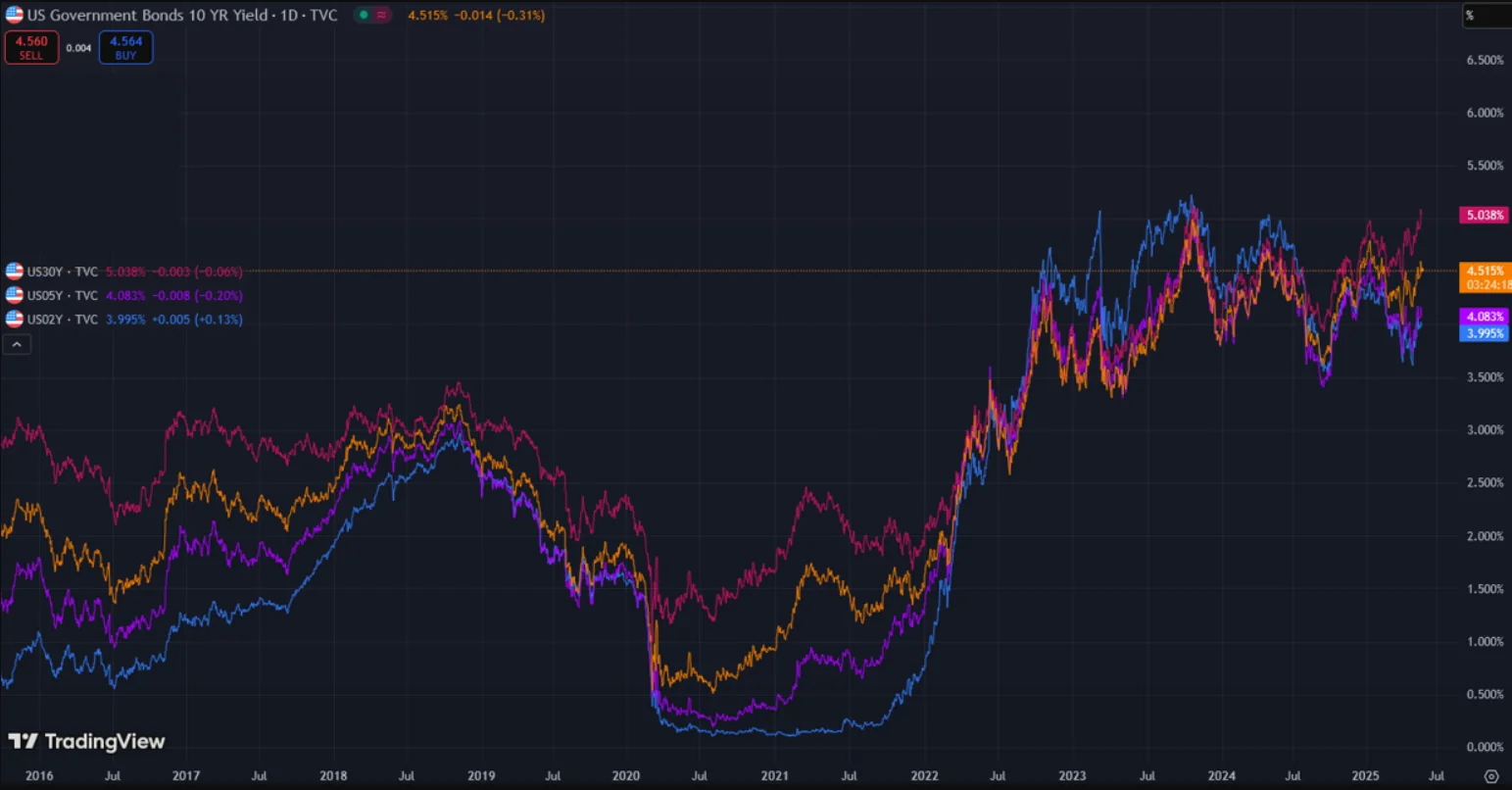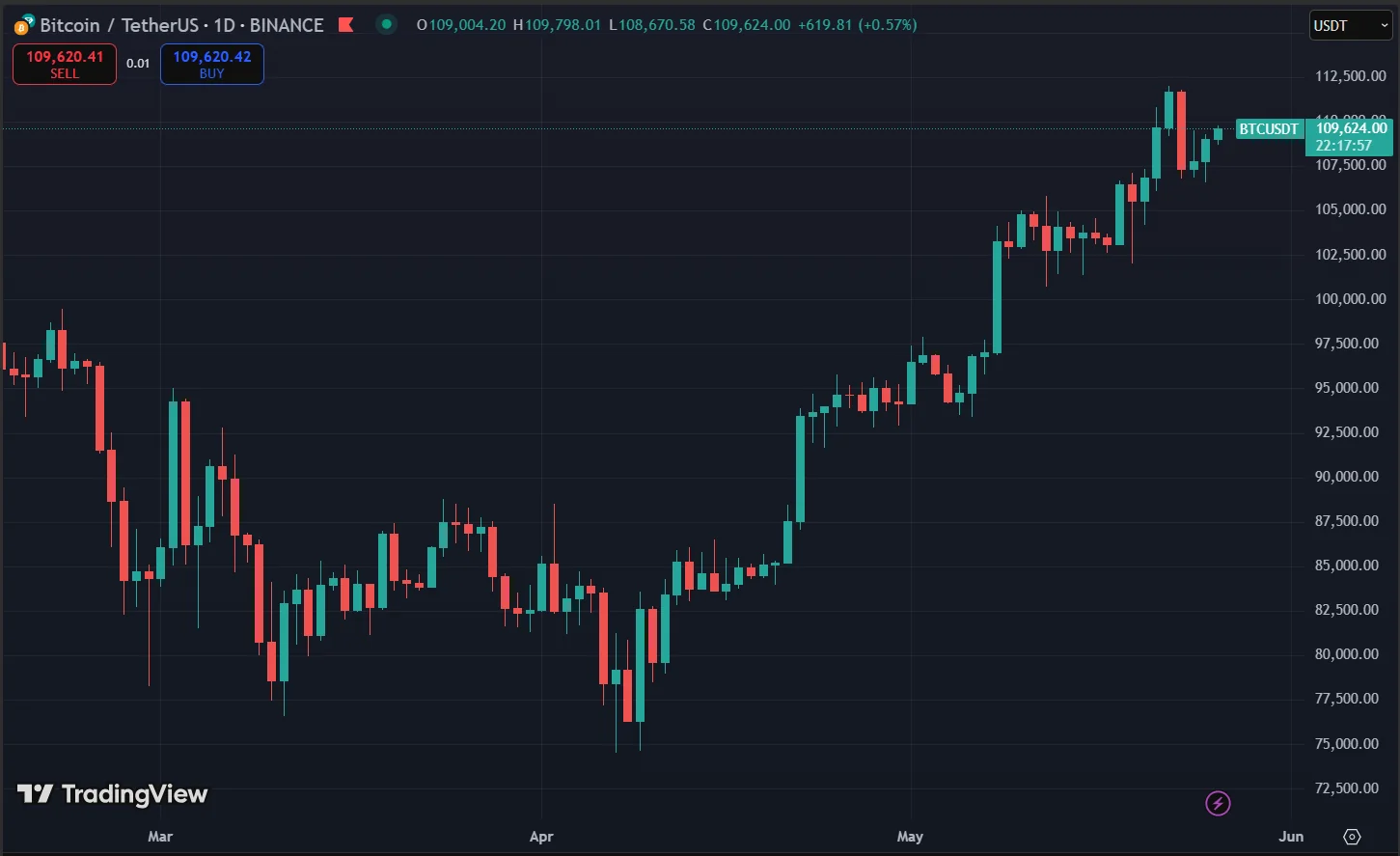As macroeconomic instability intensifies around the world, Bitcoin is experiencing a strong upward trajectory, repeatedly setting new price records. In both the United States and Japan, bond yields are surging, global economic growth is showing signs of stagnation, and U.S. consumer confidence has plummeted to record lows.
What’s particularly notable is that the very macroeconomic factors that once posed a threat to Bitcoin’s price are now acting as catalysts for its rise. This unexpected reversal reflects a fundamental shift in investor sentiment regarding risk assessment and the choice of safe-haven assets. At the heart of this transition is the U.S. debt crisis and the explosive increase in Treasury yields—long regarded as the world’s safest asset class.
On May 22, the yield on the 30-year U.S. Treasury reached 5.15%—the highest level since October 2023 and a peak not seen since July 2007. Meanwhile, the 10-year yield stands at 4.48%, the 5-year at 4%, and the 2-year at 3.92%.
For the first time since October 2021, the yield spread between the 5-year and 30-year U.S. bonds widened to 1%. This suggests that markets are pricing in a prolonged period of stronger growth, persistent inflation, and higher-for-longer interest rates.

Traditionally, rising yields tend to pressure risk assets. Yet this time, both stocks and Bitcoin continue to climb. This divergence suggests that investors may be moving away from conventional strategies and turning to “off-system” assets such as Bitcoin, even though it is widely considered volatile and risky.
Currently, Bitcoin [BTC] has officially entered Phase E of the Wyckoff accumulation model—a stage that typically signals a breakout and the beginning of a strong upward trend.
A key technical indicator appeared on May 24, when the 50-day moving average crossed above the 200-day moving average, forming a “golden cross” on the daily chart. This is a classic bullish signal that reflects growing market confidence in a positive long-term outlook for Bitcoin.
Many traders are now eyeing the next target at $125,000—considered the first major resistance level in this new bull cycle.

A reputable market analyst recently shared on Twitter that the next phase for Bitcoin could either be a distribution period or another accumulation cycle. However, in his view, the more likely scenario is a re-accumulation phase—especially as the U.S. Senate prepares to vote on a series of significant crypto-related bills.
Of course, regulatory developments often bring volatility. Still, if new legislation can provide legal clarity—particularly in defining digital asset classifications—it could significantly strengthen institutional investor confidence in the cryptocurrency market.






